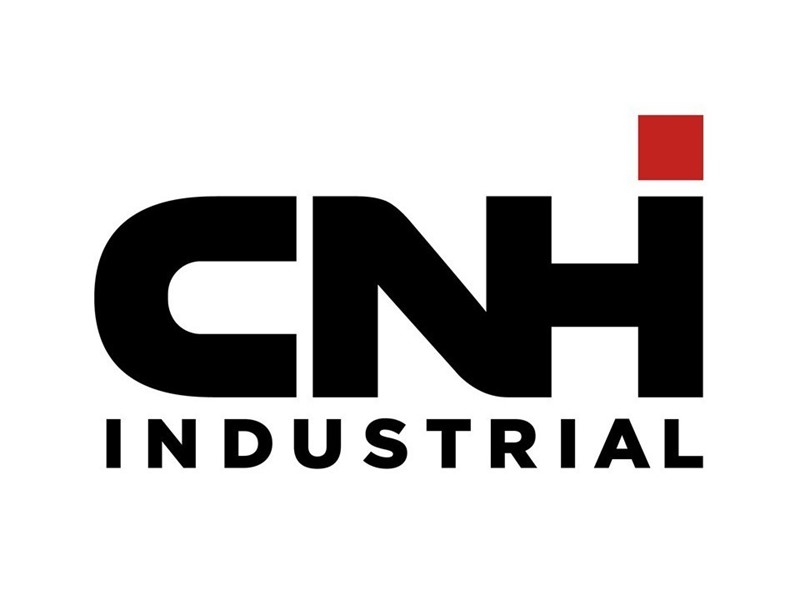Five keystone pillars of profit (Part V): Operating expenses
Fifth article in a series
By Jim Yount
We will begin by revisiting the fourth article in this series from March 2014 Outdoor Power Equipment. Remember my German friend who said, “We all live by sales.” And we all agree that’s true. It is now time for the rest of the story. From the proceeds of the sales, our first responsibility is to pay for the cost of goods sold. After paying cost of goods, the money that remains is identified as Gross Profit (Profit Pillar Number Three). It is from gross profit dollars that Operating Expenses (Profit Pillar Number Four) are paid.
Let’s not forget this is an actual OPE dealer/retailer case study history. To refresh your memory as to how we arrived at our subject for the fifth article, “Operating Expenses (Profit Pillar Number Four),” using words and numbers, we will rebuild the “Five Keystone Pillars of Profit, Ageless Formula for Success.”
Remember, we are using rounded numbers to make it easier to track our five keystone accounting principles. There is nothing complex about “Five Keystone Pillars of Profit, Ageless Formula for Success.” It’s how we approach managing business for earning exceptional profits and sustaining growth for the next two or three decades since everything we do today, and in the future, will be dependent upon gross profit dollars earned.
From our actual case study, Net Sales (Profit Pillar Number One) is $3,400,000. By subtracting $2,400,000, we determine Cost of Goods (sold) (Profit Pillar Number Two). Cost of goods (sold) is 70.59 of net sales dollars.
We also learn Gross Profit (Profit Pillar Number Three) is $1,000,000. Our earning margin of profit is 29.41 percent of Net Sales (Profit Pillar Number One). Gross profit dollars represent the money left over after paying your suppliers for inventory sold.
Gross profit dollars is the lifeblood of business. It is from gross profit dollars earned that Operating Expenses (Profit Pillar Number Four) will be paid. Operating expenses represent the cost to meet sales goals and keep the doors of your store open. Operating expenses include things such as advertising, banking, computers, insurance, office supplies, payroll wages and benefits, telephone/communications, vehicles and maintenance. Our examples stop here. Your actual chart of accounts will be discussed later in this article.
Profit Pillar: Spend too little in total business presentation, and customer service will suffer.
Profit Pillar: Spend too much on total cost of doing business, and your dreams and visions of success and lifestyle will fade.
As we proceed with profit pillar issues, remember “the only way to keep score in business is to count the money.”
Most business owners have arrived at a time to pay operating expenses, but after counting the money, Gross Profit (Profit Pillar Number Three), there were not enough funds in the bank to meet the demand. The caution flag should be waving. Perhaps it’s time to ask ourselves a few questions regarding money. Is the lack in Gross Profit dollars caused by a lack in Net Sales? Did we pay too much for Cost of Goods sold? If sales have been as forecast, is the lack in gross profit dollars caused by lower margin of profit? If gross profit margins are as projected, is the lack of sufficient gross profit dollars available to pay bills caused by an increase in Operating Expenses (Profit Pillar Number Four)?
In a brief review of strategic business planning, we ask ourselves the following questions:
How many dollars are budgeted for operating expenses?
After paying operating expenses, how many dollars are planned/projected for Pretax Net Profit (Profit Pillar Number Five)?
A detail budget of operating expenses is essential for the purpose of conserving profit dollars. Without a budget for documenting and managing expenses, Pretax Net Profit at the end of the year tends to be not sufficient for sustaining the future. Dreams will continue to be just dreams.
Too many business owners rely on their CPA document as a guide for budgeted expenditures. However, your CPA prepares a chart of accounts used to best represent your company to the Internal Revenue Service (IRS). Perhaps the chart of accounts produced by your CPA and presented to the IRS has 25-30 line items. They know from experience short forms are best.
However, it is not sufficient for your in-house long-term sustainability. Much more detail is required. Without detail, a business tends to grind itself into dust by not knowing what’s missing. Reviewing the chart of accounts used by our actual case study, from top to bottom, the line item count is 47. Total includes line items in cost of staff.
Maximizing money in the bank at the end each month begins with a well thought-out business plan, including a detail chart of accounts reflecting budgeted operating expenses.
The big question at this juncture is how much of $1,000,000, Gross Profit (Profit Pillar Number Three), will become Pretax Net Profit (Profit Pillar Number Five) after paying all Operating Expenses (Profit Pillar Number Four)?
There are four pages in Jim Yount Success Dynamics (JYSD) chart of accounts for tracking operating expenses. Our budget format is designed based on experience, especially with dealers/retailers selling outdoor power equipment, and combined with hardware stores, farm and ranch supplies, auto parts, equipment rental and cooperatives. We would never state our chart of accounts is all inclusive.
Profit Pillar: Since no two store owners will have identical dreams and ambitions, the product mix on their floors and shelves, as well as services provided will be different.
Profit Pillar: Successful dealer/retailers will sell more goods and services, when they are driven by local market demand.
First item listed on our chart of accounts for keeping score is the cost of staffing. Wages and benefits (payroll) tend to be a company’s largest expense.
There are four pages in our chart of accounts (NA = Not Available).
Page 1 Cost of Staff (rounded numbers)
Budget
Wages — officers and others
$568,000
Social Security/FICA
$44,000
FUTA
NA
SUTA
NA
Workers’ Compensation
$3,200
Health Care Insurance
$50,000
Officer Life Insurance
NA
Training-Education
NA
Uniforms/Laundry
$7,300
Retirement Benefits
$14,000
Cost of Staffing Total
$686,500
Page 1 also contains about 20 other items, including accounting, advertising, banking, and computer/technology. Other Page 1 items total $193,500 for a grand total of $880,000.
Page 2 features about 30 items, including freight, legal fees, interest, office supplies, maintenance, and sales merchandising. Page 2 total: $110,000.
Page 3 consists of more than 20 items, including shop supplies, taxes, travel, utilities, telecommunications, utilities and vehicles. Page 3 total: $45,000.
Page 4 includes other miscellaneous expenses. Sub-total: $2,000.
Consolidated total for pages 1, 2, 3 and 4. Actual operating expenses total: $1,037,000.
May I have your attention? Based on my experience, the largest operating expense in conducting business is the cost of staffing. In our actual case study history, wages and benefits cost $686,500. As a percent of total operating expenses ($1,037,000), it is 66.20 percent.
That leaves $313,500 gross profit dollars to pay the remaining operating expenses of $350,500 — a deficiency of $37,000 representative of a negative 3.70 percent in operating expenses.
Always in a teaching mode, we at JYSD lead the dealer/retailer through the first four profit pillars. We are dealing with an actual case study history. However, this brief analysis and fact, or factoid, is a mixture of comments that we routinely hear from our customers.
After reviewing Net Sales (Profit Pillar Number One), “We’ve got to find a way to sell more (stuff) equipment and services.” After reviewing Cost of Goods (Profit Pillar Number Two), “I’m paying too much for my equipment.” After reviewing Gross Profit (Profit Pillar Number Three), “We did not earn enough profit. I knew I was paying too much for this stuff.” After reviewing Operating Expenses (Profit Pillar Number Four), “I knew I was going to run out of money. I always do.” Others say, “I was expecting it to be worse.” These are words of uninformed spending rumbling in the background.
A brief detour. The largest uninformed spending ratio related to our subject we have worked with, the owner spent 83 percent of gross profit dollars on wages and benefits (cost of staffing). That leaves 17 percent of gross profit earnings to pay remaining operating expenses and deal with financial issues related to Pretax Net Profit (Profit Pillar Number Five). WOW! Heavy borrowing has already begun for the lack of operating without a strategic business plan that includes a detail budget.
Side note: A few times when payroll costs were excessive, owners have said: “We have siblings that are employees. We choose to pass some business profits to them through increased wages and benefits.
The most efficient dealer/retailer we’ve worked with, the owners spent only 37 percent of gross profit dollars earned on cost of staffing (wages and benefits). It was obvious this husband-and-wife team managed every business activity. Allow me to answer your question. The reason we were working with this business was we had met this gentleman at one of our workshops. He and his wife wanted to know how to maximize profits and grow their business. They wanted to grow Net Sales (Profit Pillar Number One). With increased sales, they expected to generate additional Gross Profit (Profit Pillar Number Three). As business owners, these folks knew it was from a healthy Pretax Net Profit (Profit Pillar Number Five) that they would achieve/fulfill their personal goals, dreams and ambitions.
Profit Pillar: We seldom see the resulting profitability dealers/retailers desire when more than 50 percent of Gross Profit (Profit Pillar Number Three) is spent on wages and benefits (cost of staff).
Bottom-line issue: I know from experience that the first step in keeping yourself informed is never assign anyone to pay your operating expenses. It’s OK to ask your secretary/office manager. I’ve heard my voice rumbling while sitting and waiting to see my banker. “I wish I had paid more attention to how much I was spending. I would have never allowed this to happen.”
In the sixth article in this series, we will discuss Pretax Net Profit (Profit Pillar Number Five). Pretax Net Profit represents money left over from paying operating expenses. From this resource, notes on assets must be paid. Our focus is how to stop the borrowing and start winning with your business.
Jim Yount is the founder and chief executive officer of Jim Yount Success Dynamics LLC. For more than 30 years, he has hired, trained, managed, sold, marketed, and motivated. Extensive real-world experience in retailing, distribution and working with manufacturers, both domestic and international, has earned Jim the reputation as a trustworthy and knowledgeable professional in his field. As a results-oriented speaker, he is dedicated to inspiring groups of 30 to 3,000 to develop their talents and realize their full potential. As a business consultant, teacher and coach, Jim is experienced at challenging leaders to explore their operational procedures and change unacceptable practices that are producing poor results. For more information, contact Jim at jimyount@hughes.net or (903) 796-3094 or visit his website at www.jimyountsuccessdynamics.com.



